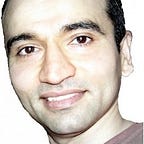The Anatomy of My Personal Writing Framework
I find writing very laxative, brings me more clarity about my thoughts and feelings. It was Jan 2011 when my first article got published but I never had a structured approach to writing. English was not my first language so I had to edit multiple times to make it readable.
I attended few on-line courses on writing and also tried to read a few books on writing. Nothing worked. Being a technical architect I am more familiar with diagrams and frameworks. I started working on designing a writing framework for myself that should depict everything that I needed to see on a single page. One can easily tell what is going on with just a single glance on it, or not so much as I might have biased the design based on my understanding. I wish my thoughtful reader will be able to pick up something useful out of it and share feedback.
There are many elements in this framework. Let’s dive a little deeper here.
What’s in it for the readers?
This is the most important thing you should have in mind while writing an article. Write a crisp sentence (just for yourself) about why you are writing on the topic? Use strong and visual language when you tell your readers on the importance of your article.
Approach & Strategy
I wish I could give one writing approach that is best but there is no such thing. You have to find your unique writing approach based on your subject and environment. Writing about future of technology is totally different from writing about historical events — so need a dissimilar style.
Research, outline, first draft, editing and publishing: each step is different and needs a plan in a way that is best for the final outcome. I try to put different hat for each role and this approach has worked wonders for me. Role based writing approach says Collect material like a madman, outline like an architect, fix it like a carpenter and close it like a judge.
This approach was first given by Betty S. Flowers.
Strategic Steps
- Work on key outcome that you expect from the article,
- Focus on few keywords while remaining within the context
- Create a draft mind map that depicts relationships among key ideas
- Create outline and start actual writing
- Planning should take 40%, writing 20% and editing 40% of the time
Actual Writing
High level guidelines
- Clarity, context and main key points should be well covered in the beginning
- Each paragraph should begin with a point and should have proper transitioning to the next
- Series of like items should be listed ( like this list )
- Repeat main keyword ( possibly in each para or sub-topic )
Start with
- Some anecdote
- Conflict situation
- Problem statement
- Some historical event
- Main Body should have
- Stats and research that support your writing
- Quotes from experts, leaders and influencers on the subject ( don’t overdo this )
- For technology topics add graphs and past trends
If article is about solving some issues (as most articles are) then it should have
- Problem history
- Problem root cause
- Solution (What is the solution? Solution steps and its impact. Who will solve it? Will it work long-term? What if scenarios? )
Additional context (wherever possible)
- Bring in What, Why, How, Who, When & Where
- Specific to Geo, Racial, Political, Humanity
- Separate facts from myths
- Endless opportunities for Ideas, tips and lists
Closing Articles (Call to Action)
- Share summary of what has been written — based on how you introduced various key points in the beginning
- Sum-up and If possible share why you think you made your point by this article
- Involve readers: Ask questions and take feedback
Using this framework for your writing could bring many advantages. Frameworks give you a new abstraction level so that you can write in terms of its flow and guidelines without missing key points, resulting in less mistakes.
Print a copy of this framework and next time you start writing put it in front of you; be open, and let this writing framework give you some direction and suggestions.
